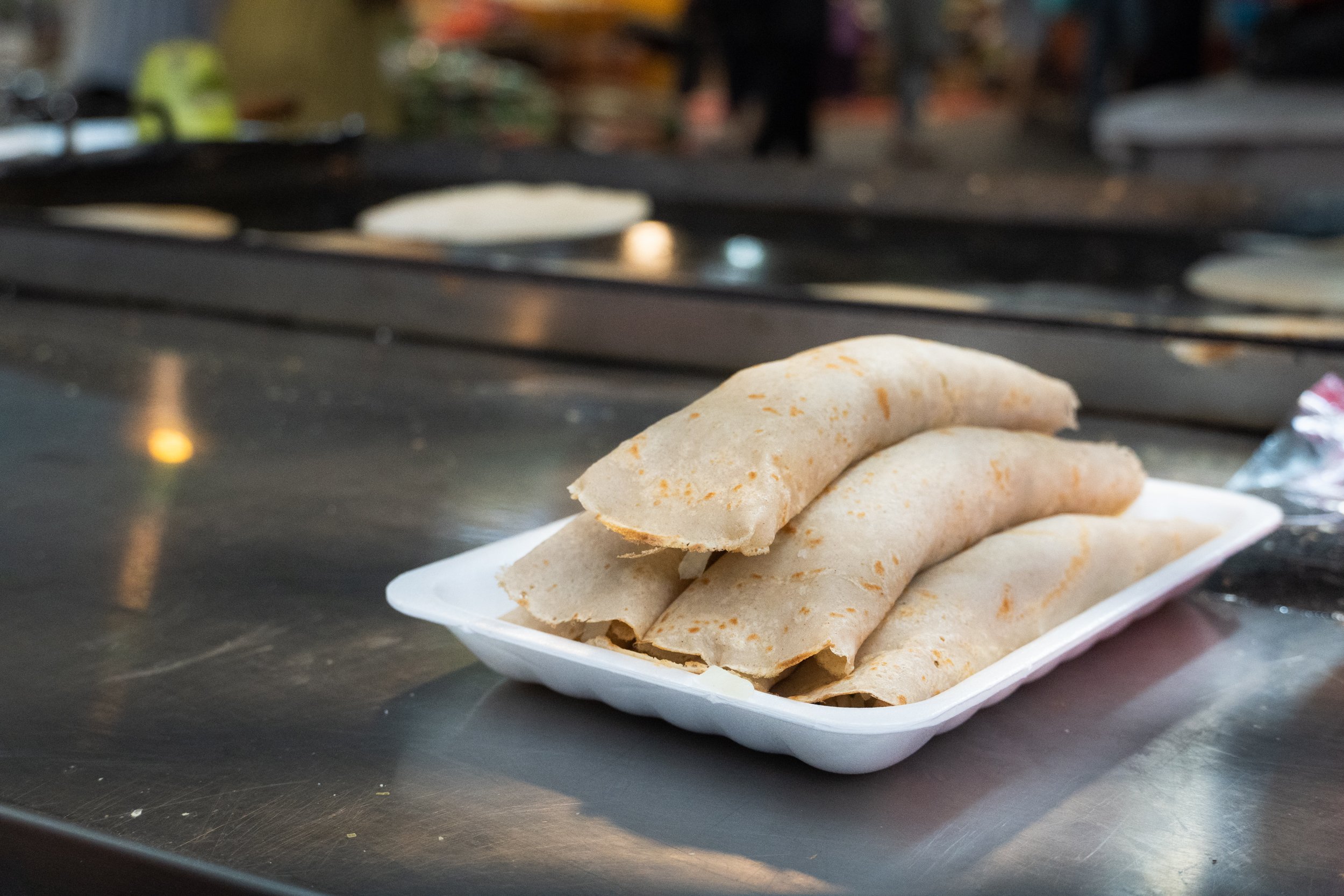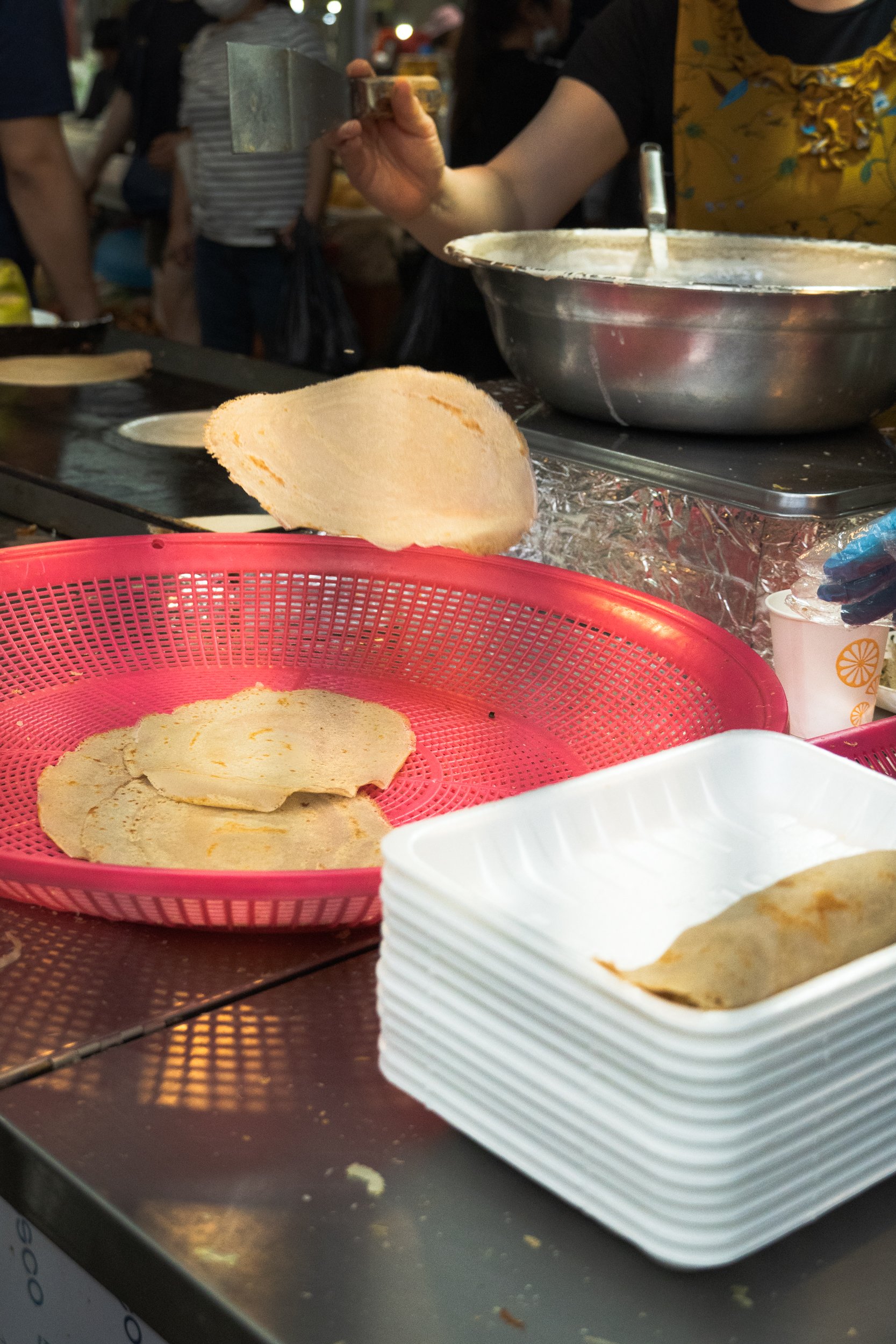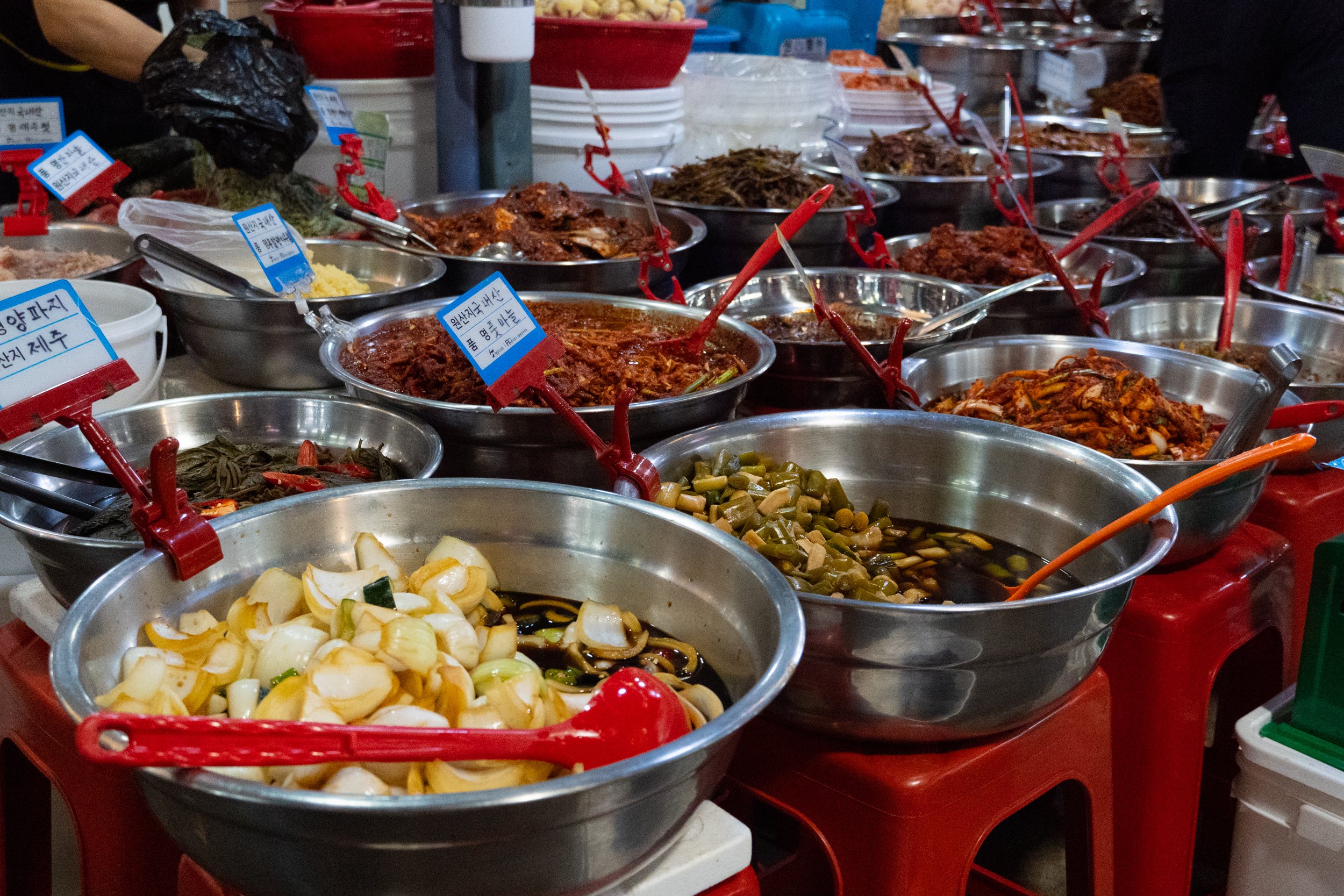Exploring the Jeju Five-Day Folk Market, Jeju-do
Introduction
The Jeju Five-Day Folk Market had it’s early beginnings at the start of the 1900s. However, it wasn’t until 1906 that it was officially established, founded alongside eight other markets under Jeju’s then-newly elected governor in an effort to prompt the distribution of goods across the island. Since its establishment, the folk market has changed location numerous times before finally settling at its current location in 1988. Today, the Jeju Five-Day Folk Market is not only the largest periodical market in Jeju, but in all South Korea, containing around 1,000 vendor stalls with 860 merchants and offering a variety of local goods from fresh seafood and vegetables to flowers, livestock, pottery, medicine, and more.
This post will cover all you need to know about visiting the Jeju Five-Day Folk Market, including when to go, what you can expect to see, and nearby attractions. So, without further ado, let’s get started!
Getting There
As its name suggests, the Jeju Five-Day Folk Market is open every five days—specifically on days ending in ‘2’ and ‘7’. Thus, in total the market is open only six times a month: on the 2nd, 7th, 12th, 17th, 22nd, and 27th.
The market is located near the Jeju International Airport in Jeju City. The easiest way of getting there is by bus or by car.
Bus
Take the nearest bus going to the ‘Jeju Five-Day Folk Market [north]’ (제주민속오일장[북]) bus stop. I took bus #455, but there are several different buses that go to this same stop. You’ll know when you’ve arrived when you see a giant sign saying “‘Jeju city Traditional 5 Day market.”
From the bus stop, walk about 1~2 minutes past the sign, straight down ‘Five Day Market Road’ (오일장동길/Oiljangdong-gil). After crossing through the parking lot, you will come to the entrance of the market.
Bus stop: Naver maps | Kakao Maps
Car
There is a multi-level parking garage and additional parking lots available next to the market. The garage also has charging stations for electric vehicles. Since the market is so popular, parking spaces tend to fill up quickly. If driving, I recommend arriving earlier in the day to ensure getting a space.
The Market
The market’s stalls are divided into various zones, categorized along five differently themed streets: daebak (awesome) street, love street, happiness street, health street, and cheerful street. I added translations for the most important stall and locations on the map below (photo 2).
At the front entrance to the market is daebak street and love street. Here, merchants sell goods such as flowers, grains, and pottery. This is also where the grandmother marketplace is. The grandmother marketplace is a designated area where women aged 64 and older can set up stalls for free to sell their home-grown produce and goods. The products here are said to be high-quality but at much cheaper prices than regular stores.
At the center of the market are the ‘miscellaneous’ stalls, selling a variety of items ranging from pets and toys to snacks and street foods such as king tteokbokki (giant rice cakes), bungeo-ppang (fish-shaped pastry bread with filling), sugar donuts, and more.
Here, I picked up some bingtteok, a traditional rolled buckwheat pancake special to Jeju. The pancake is spread thinly then filled with steamed radish seasoned with salt, sesame oil, and sesame seeds. The flavor is mildly salty and savory. Personally, I didn’t love the bingtteok I ate, but was happy to have tried it. It was also fun to watch the vendor make the bingtteok, tossing the cooked pancakes through the air from her skillet into the basket.
Surrounding the miscellaneous stalls are tables selling a large assortment of delicious looking vegetables and fresh fruits.
Continuing forward, along ‘happiness road’ are stalls selling bedding, linen, and knitwear along with imported goods such as clothing and bags. Past the bedding and linen on the left side is hardware and livestock. The livestock section was the most dimly lit area of the market and personally was unpleasant to walk through as the animals didn’t appear to be treated well. This is definitely a point of cultural difference, so I don’t want to criticize too harshly. However, if you are an animal lover, I would suggest staying away from this area.
At the back of the market is ‘health road’ which contains a series of packed restaurants, medicinal herbs shops, and more food products including various types of kimchi and banchan (side dishes).
Along the same street on the left side is the fish and seafood zone. Here, numerous merchants can be seen cleaning, gutting, and slicing fresh fish caught straight from Yeosu’s waters.
Nearby Attractions
After exploring the marketplace, I recommend visiting the nearby Iho Tewoo Beach, located along the northern edge of Jeju City and home to Jeju’s iconic red and white horse-shaped lighthouses. The pair of lighthouses, standing at 12 meters (39 ft) tall, are designed after the native Jeju horse.
Near the beach is an array of cafes and restaurants. I visited a place called Cuju Jeju Guok, a vintage-style café that doubles as a flea market. I ordered an iced americano which came with some yakgwa (traditional Korean honey cookies) and yanggaeng (sweet red bean jelly).
Conclusion
In all, I would highly recommend checking out the Jeju Five-Day Folk Market when in Jeju-do. I may go as far as to suggest scheduling your Jeju trip ensuring that you can visit the market on a day it’s open. Even though the large and bustling crowds can be a bit overwhelming at times, the market is worth it to enjoy the local food and products and further connect with the community. Happy travels!
Additional Information
Jeju Five-Day Folk Market:
Address: 제주특별자치도 제주시 오일장서길 26
26 Oiljangseo-gil, Jeju-si, Jeju-do, South Korea
Hours: 8:00am-6:00pm weekdays; 9:00am-6:00pm Saturday
open on days ending in 2 or 7 (2nd, 7th, 12th, 17th, 22nd, 27th)
Iho Tewoo Beach:
Address: 제주 제주시 이호일동
1665-13 Iho 1(il)-dong, Jeju-si, Jeju-do, South Korea
Cuju Jeju Guok Café:
Address: 제주 제주시 테우해안로 172-15 1층 제주구옥
1665-1 Iho 1(il)-dong, Jeju-si, Jeju-do, South Korea
Hours: 7:00-8:00pm daily






















